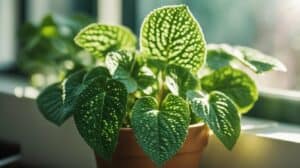Darlingtonia Californica, commonly known as the Cobra Lily, is a unique carnivorous plant native to the western United States.
This fascinating plant has long captured the attention of botanists and nature enthusiasts alike due to its distinctive appearance and remarkable adaptations.
In recent years, researchers have made significant strides in uncovering the secrets of this elusive plant, shedding new light on its biology and ecology.

One of the most striking features of the Cobra Lily is its unusual shape, which resembles that of a cobra ready to strike.
This distinctive form is thought to serve as a lure for insects, which are attracted to the plant’s nectar and subsequently trapped in its specialized leaves.
While the Cobra Lily’s carnivorous habits are well-known, much remains to be learned about its unique adaptations and the ecological role it plays in its native habitat.
Discovering Darlingtonia Californica

Darlingtonia Californica, commonly known as the Cobra Lily, is a carnivorous plant that is native to North America.
This unique plant has fascinated botanists and plant enthusiasts for centuries due to its unusual appearance and carnivorous nature.
In this section, we will explore the taxonomy and classification, as well as the habitat and distribution of Darlingtonia Californica.
Taxonomy and Classification
Darlingtonia Californica belongs to the family Sarraceniaceae, which includes other carnivorous plants such as the Venus Flytrap and the Pitcher Plant.
The genus Darlingtonia contains only one species, Darlingtonia Californica. The plant was first described by botanist William D. Brackenridge in 1839.
The Cobra Lily is also known by other common names such as the California Pitcher Plant, Cobra Plant, and Cobra Lily.
The name “Cobra Lily” comes from the plant’s resemblance to a rearing cobra, with its hooded leaves and forked tongue-like structure.
Habitat and Distribution
Darlingtonia Californica is found in wetlands and bogs in the western United States, mainly in California and Oregon.
The plant prefers to grow in areas with high humidity and cool temperatures.
It is often found growing alongside other carnivorous plants such as the Venus Flytrap and the Sundew.
The Cobra Lily has a unique way of capturing its prey.
Its leaves are modified into tubular structures that trap insects, which are then digested by enzymes secreted by the plant.
The plant also has a symbiotic relationship with bacteria that live in its roots and help it to digest its prey.
In conclusion, Darlingtonia Californica is a fascinating plant that has captured the attention of botanists and plant enthusiasts for centuries.
Its unique appearance and carnivorous nature make it a must-see for anyone interested in the world of plants.
Morphology of the Cobra Lily

Unique Leaf Structure
Darlingtonia Californica, commonly known as the Cobra Lily, is a carnivorous plant that is native to the bogs and seeps of Northern California and Southern Oregon.
One of the most striking features of the Cobra Lily is its unique leaf structure.
The leaves of the Cobra Lily are modified into tubular structures that resemble the shape of a cobra’s head, hence the name.
The Cobra Lily’s leaves are green with red veins, and they are covered with tiny, downward-pointing hairs that help to guide insects down into the trap.
The interior of the leaf is lined with a slippery, waxy coating that makes it difficult for insects to climb out once they have fallen in.
Flower and Reproduction
In addition to its unique leaf structure, the Cobra Lily also has an unusual flower.
The flower of the Cobra Lily is a greenish-yellow color, and it is shaped like a pitcher.
The flower is pollinated by a variety of insects, including bees, wasps, and flies.
Once the Cobra Lily has been pollinated, it produces a seed pod that contains numerous small, black seeds.
The seeds are dispersed by the wind, and they can take up to two years to germinate.
Overall, the morphology of the Cobra Lily is truly fascinating.
Its unique leaf structure and unusual flower make it a popular choice for gardeners and plant enthusiasts alike.
Carnivorous Mechanisms

Attracting Prey
Darlingtonia Californica, commonly known as the Cobra Lily, is a carnivorous plant that attracts its prey through a combination of visual and olfactory cues.
The plant’s uniquely shaped leaves and hood resemble a cobra’s head, which is believed to lure insects into the trap.
Additionally, the plant emits a sweet nectar-like scent that attracts insects to its opening.
Digestion Process
Once an insect is trapped inside the Cobra Lily, it becomes immersed in a digestive fluid that breaks down its body.
The plant secretes enzymes that dissolve the insect’s soft tissues, leaving behind only the exoskeleton.
The nutrients from the insect’s body are then absorbed by the plant to aid in its growth and development.
The digestive process of the Cobra Lily is aided by the plant’s unique morphology.
The interior of the plant is lined with downward-pointing hairs that prevent the insect from escaping once it has fallen into the trap.
The hairs also help to direct the insect towards the digestive fluid, ensuring that it is fully immersed in the fluid and broken down efficiently.
In conclusion, the carnivorous mechanisms of the Cobra Lily are fascinating and unique.
Its ability to attract and digest insects has enabled it to thrive in nutrient-poor environments.
Frequently Asked Questions
What unique mechanisms does the cobra lily use to capture its prey?
The cobra lily, also known as Darlingtonia Californica, has a unique mechanism for capturing its prey.
It uses a combination of attractive scents, slippery surfaces, and downward-pointing hairs to entice and trap insects.
The insects become confused by the scent, slip on the surface, and fall into the pitcher-shaped leaves where they are digested.
In which habitats can the cobra lily typically be found?
The cobra lily is native to the wetlands and bogs of Northern California and Southern Oregon.
It can be found in areas with high humidity, cool temperatures, and acidic soil.
The plant grows in shallow water or damp soil, often in areas with partial shade.
What adaptations help the cobra lily thrive in its environment?
The cobra lily has several adaptations that help it thrive in its environment.
Its pitcher-shaped leaves allow it to capture and digest insects for nutrients, which it cannot obtain from the acidic soil.
The plant also has a unique scent that attracts insects, and downward-pointing hairs that prevent them from escaping.
Additionally, the cobra lily has a root system that allows it to absorb nutrients from the water and soil.
Could you share some fascinating details about the cobra lily?
The cobra lily is a fascinating plant with several unique characteristics.
It is the only member of its genus, and its scientific name, Darlingtonia Californica, honors the botanist William Darlington.
The plant’s striking appearance, with its pitcher-shaped leaves and cobra-like hood, has made it a popular subject for artists and photographers.
What role does the cobra lily play in its ecosystem?
The cobra lily plays an important role in its ecosystem. It provides a habitat for several species of insects, including moths, bees, and flies.
The plant also helps to control insect populations, as it captures and digests insects that would otherwise damage other plants in the area.
How should one care for a cobra lily in cultivation?
Cultivating a cobra lily can be challenging, as the plant has specific requirements for soil, water, and temperature.
It is best grown in a greenhouse or terrarium with high humidity and cool temperatures.
The plant should be grown in acidic soil, and watered with distilled or rainwater to avoid mineral buildup.
It is important to avoid overwatering, as the plant is susceptible to root rot.














